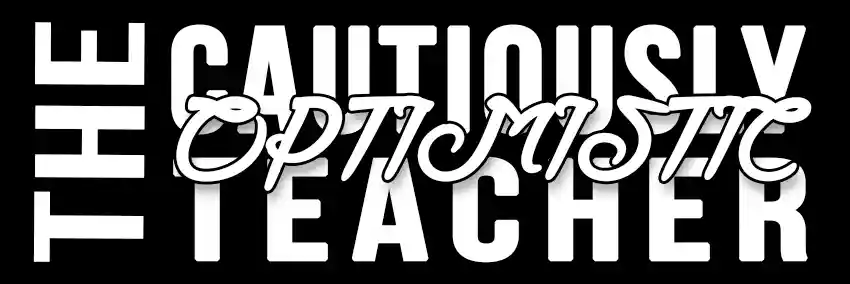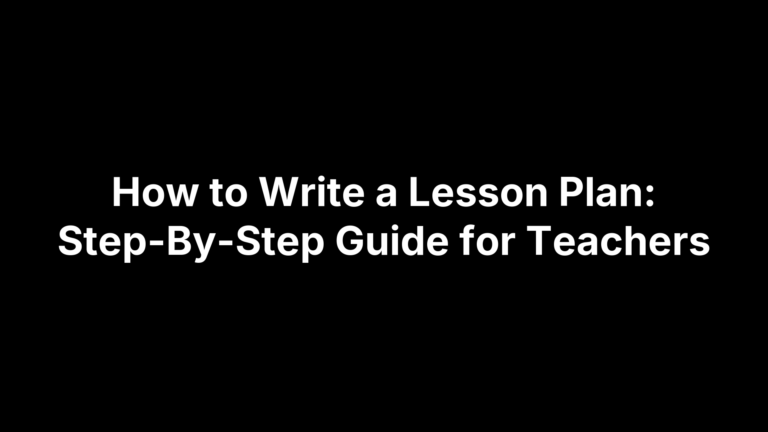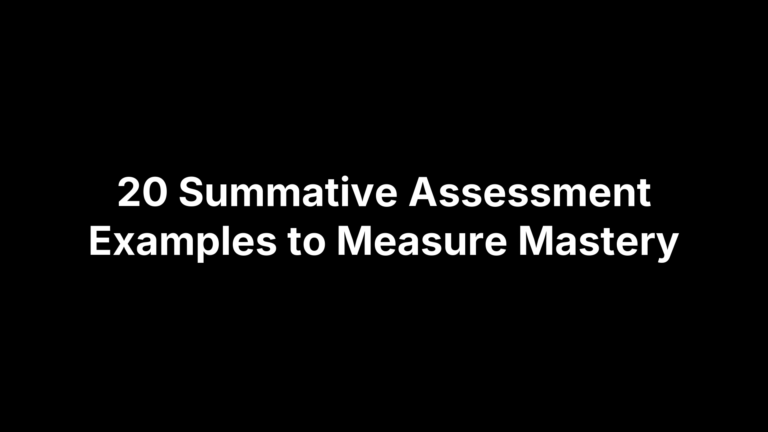Alternative Teacher Certification Explained: Pathways to the Classroom
An alternative teacher certification program lets anyone with a bachelor’s degree skip the four-year education major, finish targeted pedagogy training while already running a classroom, and walk away with the same state-issued license traditional grads receive—often in 12 to 36 months.
Whether you’re a career-changer eyeing math periods or a recent grad itching to teach English, the step-by-step guide below shows exactly how to make that license happen: confirming eligibility, comparing approved programs, estimating real costs, acing required exams, landing a paid intern job, and finally applying for a standard certificate. Because teacher shortages vary but the underlying process remains remarkably consistent across states, the upcoming sections break down each milestone so you can start planning with confidence—and finish the paperwork, tests, and classroom hours on your own timetable. Ready to switch from research mode to teacher mode? Let’s map your journey, one requirement at a time.
Step 1: Understand What Alternative Teacher Certification Really Means
At its core, alternative teacher certification is a state-approved on-ramp that lets bachelor’s-degree holders complete streamlined pedagogy coursework while already employed in a classroom. Unlike the four-year education major, these programs—often labeled Alternative Certification Program (ACP), post-baccalaureate certificate, teacher residency, or intern credential—pair evening or online classes with day-to-day teaching. The upside? You earn a full teacher salary almost immediately, finish in one to three years, and often enjoy flexible scheduling that works for career changers. The trade-off is intensity: juggling lesson planning, graduate-level assignments, and licensure exams all at once can be pricey and time-consuming if you fall behind.
Every state maintains its own list of approved providers and rules for issuing the provisional license you’ll teach under, but the fundamental structure—pre-service training, mentored teaching, exit assessments—remains the same nationwide.
Traditional vs. Alternative Path at a Glance
| Feature | Traditional Bachelor’s in Education | Alternative Certification Program |
|---|---|---|
| Entry Requirement | HS diploma; enroll as freshman | Bachelor’s degree (2.5–3.0 GPA typical) |
| Pre-Classroom Coursework | 3–4 years of education courses | 4–16 weeks of intensive modules |
| Classroom Practice | Semester of unpaid student teaching | Paid position under intern/resident cert |
| Completion Time | ~4 years total | 1–3 years while employed |
| Credential Earned | Initial/standard teaching license | The same state-issued license |
Common Myths Debunked
- “It’s not a real license.”
Reality: The end credential is identical; transcripts never say “alternative.” - “Districts hire traditional grads first.”
HR surveys show hiring managers prioritize subject fit and interview performance over preparation route. - “Tests are waived.”
You still take the same content and pedagogy exams—often earlier to secure your intern certificate.
State Examples of Alternative Routes
- Texas: 300 hours of training (150 pre-service) plus the TExES exams; paid intern certificate issued after passing content test.
- New York: Transitional B pathway pairs a master’s program with two years of mentored teaching; candidates must clear the edTPA and EAS assessments.
- California: Intern Credential lets candidates teach up to two years while completing CTC-approved coursework and the
TPAperformance assessment.
Step 2: Confirm You Meet Your State’s Eligibility Requirements
Before you plunk down an application fee, double-check that you actually qualify for your state’s version of alternative teacher certification. While every program starts with the same non-negotiable—an accredited bachelor’s degree—each licensing agency layers on its own GPA minimums, test scores, and background clearances. Spend an evening with your state department of education website and the checklist below; catching a missing item now is far cheaper than scrambling mid-semester.
Quick self-assessment
- Bachelor’s degree conferred and official transcripts in hand
- Cumulative GPA meets state cut-off (usually 2.5–3.0) or you hold a graduate degree
- Proof of subject competence (content exam, transcript review, or documented work experience)
- Clean criminal background and current fingerprint clearance
- Ability to work legally in the U.S. and, if required, meet English-language proficiency standards
Academic Credentials and GPA
Most states require at least a 2.5 undergraduate GPA, but there’s wiggle room. A 3.0 in the last 60 credit hours, a conferred master’s degree, or high Praxis Core scores can offset a lower overall average. Gather sealed transcripts early; some universities need two weeks to process them.
Subject-Matter Competency
Expect to prove you know the material you’ll teach. The usual routes:
- Pass a state-approved content exam (e.g., Praxis II, TExES, CSET).
- Present 30 semester hours in the subject on your transcript.
- In shortage areas—think physics or computer science—five years of full-time, directly related work experience may qualify.
Legal and Background Checks
Every applicant is fingerprinted, run through state and FBI databases, and screened against child-abuse registries. Fees range from $40–$75, and results can take 3–6 weeks, so schedule prints the day you apply. A misdemeanor isn’t always disqualifying, but failing to disclose one is; be upfront and supply any required court documents.
Step 3: Compare and Select an Approved Alternative Certification Program
Picking the right provider is the most strategic decision you’ll make on the road to alternative teacher certification. Start by downloading the “approved programs” spreadsheet from your state department of education—every name on that list meets minimum licensure standards, but quality, price, and support vary wildly. Skim the columns for location, grade levels served, delivery format, and intern certificate pass rates. Then create your own side-by-side tracker for at least three contenders so you can weigh trade-offs before signing any enrollment contract.
Program Delivery Models Explained
Different models suit different lifestyles:
- University post-baccalaureate: evening or weekend classes on campus; easy access to libraries and faculty but usually pricier.
- District “grow-your-own”: coursework embedded in the hiring district; strong job pipeline yet limited to local vacancies.
- Nonprofit/for-profit online: self-paced modules accessible anywhere; flexible but requires serious self-motivation.
- Teacher residency: full-time co-teaching with a mentor for a living stipend; deepest coaching yet often a full-year commitment before you become teacher-of-record.
Most states allow you to teach under an intern or resident certificate once the pre-service block is done, regardless of model.
Accreditation, Approval, and Reputation
Never assume legitimacy—verify it. Cross-check the provider’s name against:
- State approval list (non-negotiable)
- Regional college accreditation (for university partners)
- Title II reporting site for exam pass rates and completion data
Red flags: probationary status, fewer than 70 % first-attempt content-test pass rates, or generic “coming soon” accreditation claims.
Cost, Funding, and Financial Aid
Typical total program cost runs $4,000–$9,000 before exams:
| Fee Category | Low End | High End |
|---|---|---|
| Application & screening | $50 | $250 |
| Pre-service coursework | $1,500 | $4,000 |
| Internship/tuition balance | $2,000 | $4,500 |
| State & testing fees | $500 | $1,200 |
Ask about TEACH Grants, district tuition reimbursement, AmeriCorps education awards, and interest-free payment plans. Spread costs across semesters so you’re not cash-strapped during your first teaching year.
Outcomes and Job Placement Support
Solid programs brag—politely—about their results. Request:
- Three-year hiring and retention statistics
- Mentor matching process and observation frequency
- Resume workshops, mock interviews, and exclusive hiring fairs
- Alumni contacts willing to share candid feedback
If a provider can’t produce hard numbers or direct you to successful graduates, keep shopping. A little detective work now safeguards your wallet and, more importantly, your future classroom success.
Step 4: Gather Your Materials and Submit a Strong Application
Application season for most alternative teacher certification cohorts moves fast—some fill within days—so give yourself a 4- to 12-week runway to assemble every document the first time around. A complete, well-organized packet signals that you can follow directions (a trait principals love) and it prevents costly delays such as re-ordering transcripts or rescheduling entrance exams. Use the checklist below as your master template, tweaking it to match your chosen program’s exact wording.
Application Packet Essentials
Most providers require the same core items:
- Official, sealed transcripts from every college attended
- Current résumé emphasizing transferable skills (training, coaching, public speaking)
- One-page statement of purpose that links your background to student impact
- 2–3 recommendation letters—ideally one from a supervisor and one that speaks to your content expertise
- Proof of prerequisite coursework, if your subject has credit-hour mandates (e.g., 12 hours of math for middle school)
Entrance Testing and Basic Skills Exams
Plan your test date early; scores can take up to three weeks to post.
- Praxis Core, PACT, or CBEST often satisfy the “basic skills” requirement
- Some programs let high SAT/ACT scores waive the exam—confirm before paying the fee
- Use state DOE study companions or free Khan Academy Praxis modules, then schedule a retake buffer just in case
Interview or Screening Requirements
After paperwork clears, expect a Zoom or in-person interview—and sometimes a brief demo lesson. Prepare to:
- Articulate why you chose the alternative route over a traditional program
- Connect your subject-area passion to specific student outcomes
- Reference state teaching standards (e.g., Danielson, T-TESS) to show you’ve done your homework
- Reflect on classroom management scenarios; practice with a friend and keep answers under two minutes
Application Fee and Document Submission Tips
- Fees range from
$60–$200; many programs discount early-bird applicants - Convert all scans to PDF and label them
Lastname_Firstname_DocumentType.pdffor easy tracking - Use certified mail or the program’s upload portal—never rely on ordinary email for official transcripts
- Keep a spreadsheet of submission dates, confirmation receipts, and next-step deadlines so nothing slips through the cracks
Step 5: Complete Pre-Service Coursework and Training
Once your acceptance letter lands, you’ll dive into the pre-service phase of your alternative teacher certification. States typically mandate 120–300 clock hours that cover essentials—lesson design, special-education law, culturally responsive teaching, and classroom management. Programs front-load these modules so you can walk into your first day with at least the legal minimum of pedagogy under your belt. Expect evening webinars or Saturday seminars, reading reflections, and a handful of performance tasks that demonstrate you can plan and assess instruction before students are in front of you.
Treat this window like a part-time job. Block study hours on your calendar, keep syllabi visible, and finish any required content exam early; passing scores often unlock your provisional intern credential faster.
Field Observations and Clinical Practice
Most providers pair coursework with 20–60 hours of structured classroom observation. You’ll shadow veteran teachers, jot evidence of instructional strategies, and submit short reflection papers that tie what you saw to state standards. If your program offers optional micro-teaching—mini lessons delivered to small groups—do it. Principals value candidates who’ve already wrestled with pacing and questioning techniques, even in low-stakes settings.
Online vs. In-Person Learning
- Online cohorts: asynchronous videos and discussion boards provide flexibility but demand self-discipline and reliable Wi-Fi.
- Hybrid models: live virtual lectures plus three or four in-person Saturdays give you networking without a long commute.
- Fully in-person: ideal if you crave immediate feedback and peer collaboration; just plan for travel time and parking fees.
Whatever the format, assignments are calibrated to prove competency, so don’t assume online means easier—it’s simply a different delivery method.
How Long the Pre-Service Phase Takes
| State | Typical Hours | Calendar Time* |
|---|---|---|
| Texas | 150 pre-service hours | 4–8 weeks |
| Missouri | 90 contact hours + 45 practicum | One semester |
| California | 120–160 hours | 6–12 months |
*Timeline assumes continuous enrollment and on-time assignment submission. Falling behind can delay issuance of your intern credential, so pace yourself accordingly.
Step 6: Secure a Paid Teaching Position Under a Provisional Certificate
Coursework alone doesn’t make you a teacher of record—you still need a classroom and the provisional certificate (often called an intern, resident, or limited license) that lets districts put you in front of students while you finish the alternative teacher certification process. Most states issue that certificate as soon as you’ve completed your pre-service hours and passed at least one content exam. From there, the hiring clock moves quickly; vacancies are posted as early as February for fall starts, and shortage subjects can be filled right up to the first week of school. Treat this step like a conventional job search, just with a few educator-specific twists.
Strategies for Finding Openings
- Build a profile on your state’s education jobs portal (e.g., TEA’s Texas Education Job Bank or NYSED’s OLAS).
- Ask your program’s placement coordinator for a list of partner districts—many host “early-hire” fairs reserved for candidates in approved alternative tracks.
- Leverage observation contacts: email the principals you shadowed, attach your one-page résumé, and mention the date you’ll receive your intern certificate.
- Set up keyword alerts (“intern certificate,” “resident teacher,” “probationary”) on district ATS sites to catch postings that traditional applicants might ignore.
- Network in subject-area Facebook and LinkedIn groups; districts in rural or high-need areas often advertise openings informally before going public.
Salary, Benefits, and Contract Differences
Intern and resident teachers usually earn the same base pay as first-year traditionally trained peers—roughly $40k–$55k depending on region—plus full medical and retirement benefits. The fine print:
- Contracts may include a probationary clause allowing release if certification milestones aren’t met.
- Some districts hold back a small stipend (e.g.,
$1,000) reimbursed after you submit passing pedagogy-assessment scores. - Tenure eligibility starts once you hold the standard certificate, not the provisional one.
Mentorship and Support During Your First Year
State rules typically mandate 30–60 hours of documented mentoring, and good programs double that with coaching cycles. Expect:
- Weekly check-ins with an assigned mentor teacher who co-signs lesson plans.
- 3–5 formal observations by program supervisors using state evaluation rubrics.
- Reflection logs or evidence portfolios you’ll later upload for licensure verification.
Lean into this support; consistent feedback not only sharpens practice but also fulfills paperwork that proves you met all requirements for upgrading to a standard certificate.
Step 7: Pass Required State Exams and Performance Assessments
Even with a classroom of your own, alternative teacher certification isn’t complete until you clear every state-mandated exam. Two buckets matter: (1) subject-matter knowledge tests that show you actually know algebra, Spanish, or second-grade literacy, and (2) pedagogy or performance assessments that prove you can plan, teach, and assess at a professional level. Deadlines vary by state, but most programs want all scores submitted before the end of your first contract year—miss the window and your provisional certificate can lapse.
Content Knowledge Tests
These are the multiple-choice (and sometimes constructed-response) exams you probably associate with licensure:
- Praxis Subject Assessments – used by 25+ states, scores typically 150–165.
- TExES series in Texas – content test passed before the intern certificate is issued.
- CSET, FTCE, MTEL, etc. – each state brands its own, but the format is similar: subtests aligned to national standards.
Plan for a three-hour block per subtest and a 28–to-30-day score return. Most states allow unlimited retakes after a 30-day cooling-off period (you still pay each sitting).
Pedagogy & Performance Assessments
Think of these as “student teaching in a digital box.” You’ll record lessons, upload artifacts, and analyze data:
- edTPA (scored 13–18 rubrics, 1–5 scale; cut scores 37–45 depending on state)
- PPAT (four tasks submitted throughout the year; 38 is the common pass point)
- PPR or General Pedagogy exams (Texas, Florida) – computer-based test covering instruction, management, and professionalism.
Pro tip: start collecting lesson plans and student work samples the first week of school so you’re not scrambling later.
Test Preparation Strategies
- Map every required test on a backward calendar—schedule earlier than you think in case of retakes.
- Use free resources first: ETS Praxis Study Companion, Texas Exam Roadmap PDFs, edTPA handbooks, state DOE webinars.
- Build a six-week study cycle: content review → practice questions → timed mock test every Sunday.
- Form a micro-cohort with peers; trading feedback on edTPA commentaries saves edits and sanity.
- Budget for one paid resource only if needed—$15 Quizlet Plus or a $39 practice exam—rather than pricey boot camps.
Passing these exams is the last high-stakes hurdle. Knock them out, and the finish line—your standard certificate—is finally in sight.
Step 8: Apply for Your Standard Certificate and Celebrate
Everything you’ve juggled—coursework, mentored teaching, and those nail-biter exams—funnels into one final step: upgrading your provisional license to a full, renewable certificate. The paperwork feels anticlimactic, yet missing a single upload can stall your alternative teacher certification victory lap, so follow the checklist below with the same precision you brought to lesson planning.
Program Recommendation and Verification
Within days of your last requirement, your provider’s certification officer submits an electronic “program completion” form to the state. Double-check that your legal name, endorsement area, and test scores appear correctly in the portal; mismatched data is the #1 delay trigger.
State Board Application Process
Next, log in to your state education agency account, select “Apply for Standard/Initial License,” pay the fee ($75–$200), and consent to a refreshed background check. Upload any final transcripts if you finished extra graduate credits during your intern year.
Typical Total Time and Cost Recap
- Timeline: 12–24 months from program start to standard certificate
- Out-of-pocket costs: roughly
$6,000–$11,000including tuition, exams, and state fees
Hit “submit,” print the confirmation email, and cue the celebratory caffeine—or confetti—of choice. You’re officially a licensed teacher!
Step 9: Keep Your Certification Active and Advance Your Career
Once your alternative teacher certification converts to a standard license, compliance becomes ongoing. Renewal cycles (usually every five years) require PD hours, a background recheck, and a small fee, so set calendar alerts now.
Continuing Education and Professional Development
Most states need 100–150 PD hours per cycle. In-service days, webinars, grad credits, and free micro-courses count—just save certificates for audits.
Adding Endorsements and Advanced Licenses
To add ESL, SPED, or another subject, simply clear the content exam, file an online form, and your license expands—no new degree required.
Leveraging Networks and Resources for Growth
Join subject associations, conferences, and educator Facebook groups; the advice, job leads, and grant alerts there often beat any formal PD catalog.
Your Next Move
In a single breath: confirm you qualify, pick an approved provider, send a spotless application, finish pre-service training, land an intern job, teach with support, ace every test, file for your standard certificate, and keep it current—those nine steps are the whole alternative teacher certification game plan.
Now it’s your turn to act. Open a spreadsheet tonight, shortlist three programs, and plot their deadlines on your calendar. The sooner you start, the sooner you’ll be greeting students from the front of the room instead of the back row. While you’re at it, browse the career tools and classroom resources over at The Cautiously Optimistic Teacher and hop on our free weekly newsletter for fresh, teacher-tested ideas.







